Description
“Eight Books” is the most famous work of Sohrab Sepehri (1980-1307), and one of the most famous collections of poems in Persian.
Sepehri first began composing in the Nimai method, but eventually developed a particular style that blended from the humanistic and Zen teachings.
Eight books of Sepehri’s works have been collected in “Eight Books”, which include his most important poems.
In one of the poems in this collection of poems, we read from the “Voice of the Foot of Water” section:
“Life was something like an Eid rain, a plane tree full of starlings.
Life at that time was a line of light and dolls,
It was an armpit of freedom.
Life at that time was a pool of music.
The child, Powerchin Powerchin, walked away little by little in the alley
I packed my bags and left the city of light fantasies
My heart is full of dragonfly nostalgia
I went to a world party:
I go to the plain of sorrow,
I go to the garden of mysticism,
I went to the porch of Cheraghani Danesh.
I went up the stairs of religion
To the corner of doubt,
Until the cool air is empty,
I went until the night wet with love
I went to meet someone in that love head
I went, I went to the woman,
To the lamp of pleasure,
To silence please
To a lonely voice.
Things I saw on the ground:
“I saw a child, he smelled the moon.”
The East of Sorrow, The Life of Dreams, The Death of Color, The Debris of the Sun, The Traveler, The Green Volume, We Are Nothing We See and the Sound of Water, Books and Poems by Sohrab Sepehri, of course, some of these works have been published in magazines and magazines.

Book One: The Death of Color
This collection was published for the first time in 1330, but it seems that it has undergone some manipulations and changes shortly after its publication.
Poem “Illusion” from this poet’s office:
The world is polluted with sleep /
The panic has sunk in to Raiher Tapash, every cry /
As I’m on my own /
In this solitude, he does not have a pleasant role /
And I was sinking its wall in my ear: /
In the midst of all this, it seems /
What are the hidden colors of life deception! /
The night is full of horror /
The world is infected with sleep and I wake up in my illusion /
What else plans to deceive /
In this solitude that wonder is the role of the wall?
Book 2: The Life of Dreams
Its first edition was in 1332 and “The Legendary Chicken” is a long poem in this section, which covers from page 110 to page 117.
Wet Lantern, Wandering Hell, Yaboud, Tile Flower and Lost Border are some of the most beautiful poems in this book.
Book Three: Debris of the Sun.
Although this collection was ready for publication in 1337, but it was published in 1340.
We are reviewing the poem “Dust of a Smile” among other white poems of Sohrab in these spring days.
The sun shines from the bushes /
I saw him in the damp plains /
Drunk sadness watch, sweetheart /
Hair spray, his cheeks are dewy /
We saw a tulip smiling at the plain /
A beam poured into clear water /
He poured the sound into the groove of the wind /
Its effect is mixed with the smell of soil /
The river was shining and he was a sound wave /
Our eyes stared at the river of illusion /
The curtain was bright, he sang dark /
The designs are in the hands of smoke / illusion
My eyes fell on his body, he said: /
The pest of wilting near him /
Plain: Pounding Sea, Song, Light /
The dark laughter overshadowed, the canopy, the serenity, the altar, the detour in the sun, the sleep in the tumult and above the flight are the names of the other poems in this book.
Book 4: East of Sorrow
This book was first published in 1340; Hela, Na, and, a few, Shurum and Shaitan are also among the poems of Sepid, which we have quoted here as a short poem.
I came back from the sleeping spring, they were singing more jars in my hand / chicken. The lotus was falling. I broke the jar / closed the door / and sat on the porch watching you
Book Five: The Sound of Water Feet
The year 1334 was its first edition and the poems were published in the second period of the publication of Arash magazine, the third issue. The long and famous poem “I am from Kashan, my days are not bad” is included in this collection and covers the book from page 271 to page 299, and the last few lines of it are very readable in this tumultuous time.
… Maybe our job is / to run between the lotus flower and the century / to follow the song of truth (Kashan-Chenar village, summer 1343)
Book Six: The Traveler
This book is also a collection of long poems with the same title “Traveler” which was published in 1345 in Arash magazine, second period, fifth issue, to which 25 pages of the book are dedicated.
A short piece from the heart of the long poem of the traveler: you have to cross / and you have to roll the distant horizons / and sometimes you have to say a tent / you have to cross / and sometimes you have to eat a berry branch.
Book 7: Green Volume
Sohrab has presented this book, which was first published by Rosen Publications in 1346, to Buick Mostafavi. Well-known poems such as “Behind the seas, I, flower, water do not bloom” are included in this collection of poems in Golestaneh.
A poem entitled “Whispering Feathers”
Left until the ground melts /
It remains to be closed, all these lotuses are upside down /
The tree is unfinished /
Under the snow is the desire to swim paper in the wind /
And brighter insect eyes /
And the rising of the head from the horizon of understanding life /
Stay until our tray is full of talking about Sanboseh and Eid /
In air where there is no increase of a resonant stem /
And not the song of the fairy comes from the hole of the snow system /
Thirsty whisper to me /
It remains for the chicken to raise its head in the delusional stratum of Esfand /
So what should we do?
I, who in the most naked season, chirps /
Am I thirsty to whisper?
It is better to get up /
Take the color /
Draw a bird on my own
Book Eight: We Have Nothing, We Look
O old passion, close to the eras, the time of soft sand, both line and white, here was a bird and the old text of the night, a few poems in the heart of the eighth book of Sohraband.

And the end of the word: the altar
It was empty and a breeze / It was black and a star / It was a being and a whisper / It was a lip and a prayer / It was me and you / Prayer and an altar
The footprints of words such as desert, sand, sound and oscillation, sea and sleep, water, time, pulse, watching and earth are a little more prominent in the poems of the poet of the desert region and some of Kashi and Kashan can be seen in his poems.
About the author of eight books: Sohrab Sepehri
Sohrab Sepehrisha is a poet, writer and one of the most important contemporary poets in Iran, whose poems have been translated into many languages, including English, French, Spanish and Italian.
He finally died on the evening of Monday, May 1, 1980 in Pars Hospital in Tehran due to cancer.
Sahnamamzadeh Sultan-Ali Ibn Mohammad Baqer Rostaimashd Ardeh actually became the eternal host of Sepehr Aseman of Iranian poetry around Kashan.
“Sohrab Sepehri’s Eight Books” is a complete diagram of the poet’s spiritual journey seeking the truth, from political protests to the passion for searching and setting in earthly mysticism.
Sohrab Sepehri is one of the poets whose poetry world is easily accessible to everyone, unlike some poets whose poetry is not easy to achieve, understand and enjoy, and requires a lot of practice, repetition and knowledge. Has a lot of study.
Simple, coherent, and intimate language, as well as human thought, may be what draws the reader to his poetry in the first place.
Therefore, Sohrab Sepehri can be called the most easy-to-find poet of modern poetry. , Developments and transformations of the society of the poet’s time Some of the foundations of philosophy and mysticism.
Sohrab Sepehri was a searching and lonely artist and spent his whole life searching for the lost, which may have been his lost self.
Sohrab has traveled a lot, as he has traveled a lot, and for this reason, the geography of his poetry is as wide as his soul, and includes all human geography. It points to. Sohrab was immersed in his art all his life and lived and built his world and never got involved in everyday life.
“Eight Books” is one of the most influential and popular collections in the history of modern Iranian poetry.
“Sohrab Sepehri’s Eight Books” is a complete diagram of the poet’s spiritual journey seeking the truth, from political protests to the passion for searching and setting in earthly mysticism.
Sohrab Sepehri is one of the poets whose poetry world is easily accessible to everyone, unlike some poets whose poetry is not easy to obtain and understand and enjoy, and requires a lot of practice and repetition and a lot of knowledge and study. has it.
Simple, coherent and intimate language, as well as human thought, may be what draws the reader to his poetry in the first place.
Therefore, Sohrab Sepehri can be called the most easy-to-find poet of modern poetry. And the transformations of the society of the poet’s time, some of the foundations of philosophy and mysticism.
Sohrab Sepehri was a searching and lonely artist and spent his whole life searching for the lost, which may have been his lost self.
Sohrab has traveled a lot, as well as his own travels, and for this reason, the geography of his poetry is as wide as his soul, encompassing the whole of human geography. It points to.
Sohrab was immersed in his art all his life and lived and built his world and never got involved in everyday life.
1- Introducing the book on YouTube
2- Introducing the book in Aparat





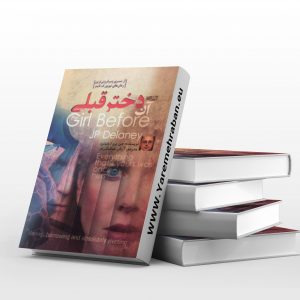
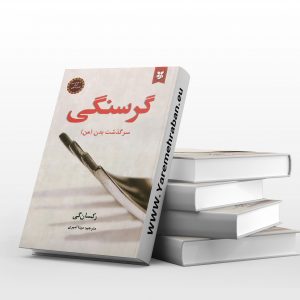



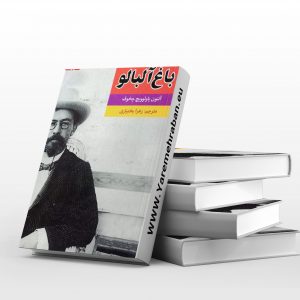
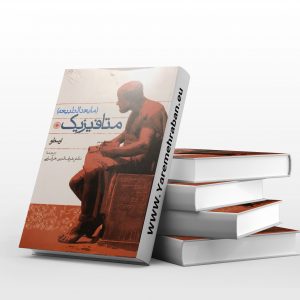

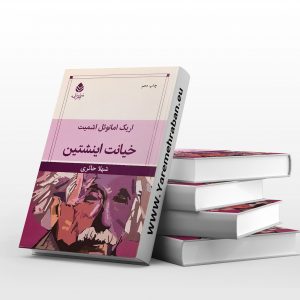
Reviews
There are no reviews yet.